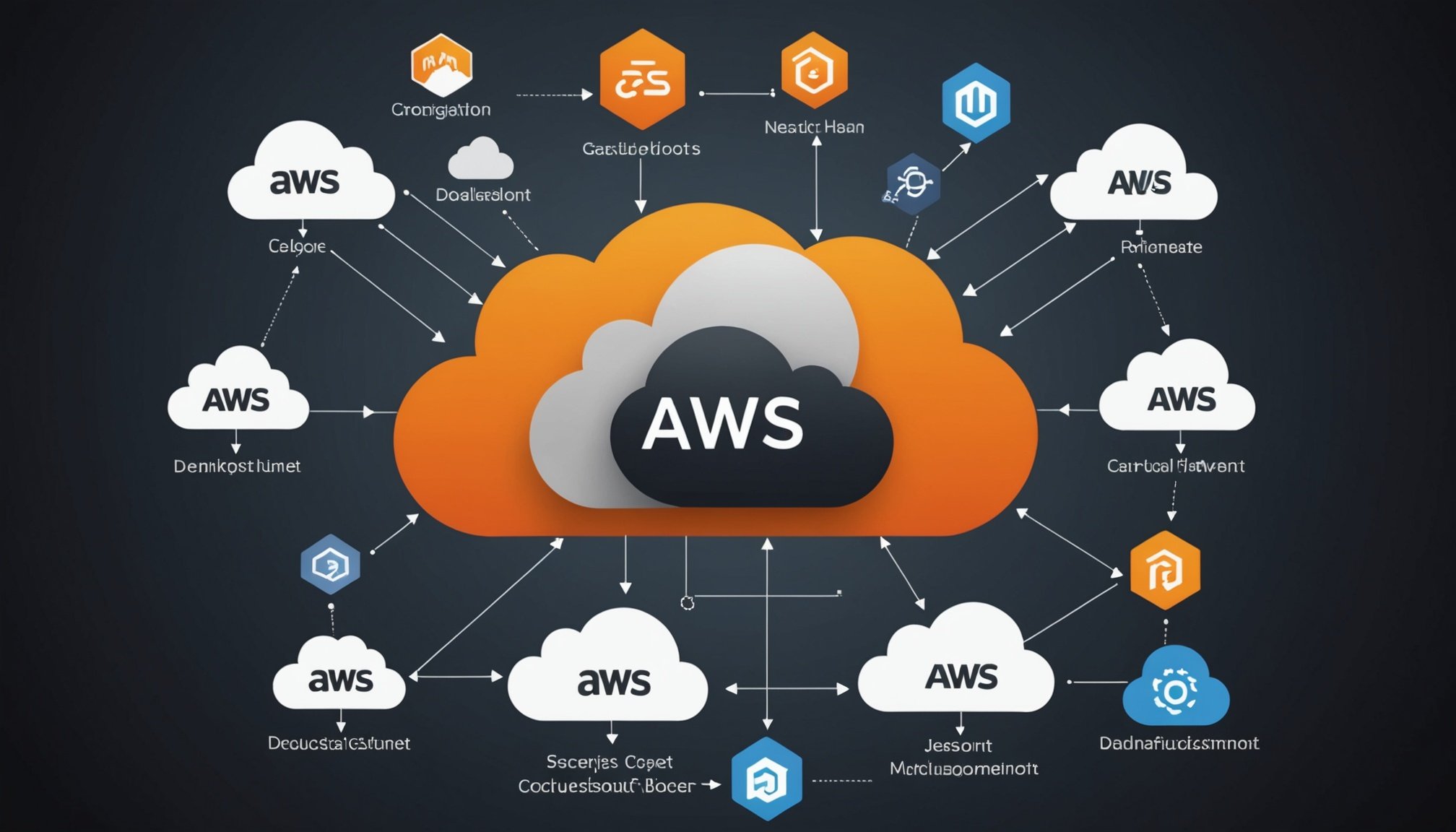Understanding AWS CloudFormation StackSets
AWS CloudFormation is a powerful tool used to automate the setup of cloud infrastructure. By defining resources in code, it helps manage infrastructure consistently across environments. In a multicloud management scenario, CloudFormation aids in streamlining efforts, making it crucial for businesses adopting a multi-cloud strategy.
StackSets vs. standard CloudFormation stacks
The main difference between StackSets and the traditional CloudFormation stacks is scope and reach. While standard stacks deploy resources within a single AWS account and region, StackSets enhance deployment capabilities by enabling the management of resources across multiple AWS accounts and regions. This extension allows for a significantly more effective multicloud management experience.
Also read : Unlocking Seamless Integration: Harnessing Azure Logic Apps to Connect Diverse Cloud Services
Key Benefits of StackSets
-
Scalability: StackSets allow the deployment and update of resources across multiple accounts and regions, providing a scalable solution for large enterprises.
-
Uniformity: Ensures consistent resource deployment, enforcing uniform configurations across environments, crucial for maintaining compliance within multicloud management.
Also read : Step-by-Step Guide to Setting Up a High-Availability Redis Cluster with Redis Sentinel
-
Operational Efficiency: By automating deployments, StackSets reduce manual intervention and associated errors, enhancing operational efficiency.
Utilising AWS CloudFormation StackSets for multicloud management simplifies complexity, offering a structured approach to deploying and managing infrastructure on a global scale. This promotes reliability and consistency, aligning with organisational policies and governance requirements.
Setting Up AWS CloudFormation StackSets
Successfully setting up AWS CloudFormation StackSets can streamline resource management across multiple AWS accounts. To embark on this journey, you’ll need a solid understanding of the deployment process, which involves various configurations and permissions.
Prerequisites for StackSets Deployment
Before diving into setting up your StackSets, ensure that you have the necessary permissions within your AWS Organization. This includes the appropriate IAM roles, allowing you deployment capabilities across AWS accounts. Additionally, verify your access to the AWS Management Console and ensure your accounts are linked under a single AWS Organization. Provisioning begins only when these elements are rightly configured.
Creating Your First StackSet
Once prerequisites are met, creating your first StackSet involves a step-by-step approach. Begin by navigating to the AWS CloudFormation service in your console. Select ‘Create StackSet’ and define the stack template. Enter the required parameters before specifying the AWS accounts for deployment. Assign your IAM roles to manage permissions effectively across different accounts. This systematic method ensures uniformity in resource allocation.
Validating StackSet Deployment
Validation is crucial for confirming correct resource configuration across accounts. Inspect deployment outputs on each account to ensure all resources align with your initial blueprint. Utilize AWS CloudWatch for monitoring any discrepancies during deployment. Regular audits bolster confidence in your StackSet’s configuration, assuring seamless integration across AWS environments.
Best Practices for Managing StackSets
Effectively managing StackSets requires strategic resource deployment across accounts. One essential practice is establishing a robust resource management plan. This involves creating a controlled environment where configurations are consistently applied across multiple AWS accounts while ensuring that scaling operations are efficient and cost-effective. Implementing automation where possible can also streamline deployment processes.
To enhance AWS governance, tagging resources accurately is crucial. Tagging aids in tracking resources, facilitating audits and ensuring compliance with organizational standards. This method, when coupled with detailed resource management, ensures seamless tracking and aids in efficient audit processes—two elements pivotal in achieving comprehensive AWS governance.
Monitoring and maintaining version control is another critical component in managing StackSets effectively. This includes regular updates to ensure that the StackSets align with current organizational goals and security standards. Documentation of changes aids in problem-solving and minimizes disruptions. A structured version control system not only helps in seamless updates but also ensures that any alterations are traceable, making your systems more resilient and robust.
In summary, by optimizing deployment, implementing an effective resource management strategy, and utilizing tagging, these best practices can significantly enhance the efficiency and reliability of managing StackSets.
Common Challenges with StackSets
StackSets can streamline cloud resource management, but they come with their own set of challenges. Understanding these can help you troubleshoot StackSets issues effectively.
Handling Deployment Errors
Deployment failures in StackSets are not uncommon. Errors can occur due to misconfigurations or missing resources. When facing deployment errors, start by checking the CloudFormation stack events to pinpoint where the issue arose. Typical problems include resource limit overruns and incorrect parameter values.
Managing StackSet Drift
StackSet drift occurs when the resources deployed deviate from the expected configuration. Drift detection tools can be used to compare actual resources with their template version. Regular drift detection helps maintain consistency across environments. Strategies like template versioning and frequent audits are recommended to manage drift effectively.
Addressing Permissions Issues
Incorrect permissions can lead to StackSet operation failures. Ensuring correct cross-account role permissions is crucial for successful deployments. Use IAM policies to define permissions explicitly and verify them periodically. Best practices involve creating least-privilege policies, allowing only necessary actions to be performed.
In tackling these challenges, remember that a systematic approach to troubleshooting can save both time and resources, ensuring the integrity and efficiency of your StackSets operations.
Automation and Integration with Other Cloud Services
Embracing cloud automation can significantly enhance your AWS experience by streamlining processes and integrating seamlessly with other services. AWS StackSets, when used in conjunction with AWS’s automation tools, provide a powerful solution for managing resources across multiple accounts and regions. These tools complement AWS StackSets, optimising deployments and reducing manual intervention.
For an even more streamlined workflow, consider integrating StackSets with CI/CD pipelines. This integration allows for automated updates and deployments, ensuring that your infrastructure evolves in line with code changes. With the multicloud tools available, you can manage resources not only within AWS but across various cloud platforms, unifying your cloud strategy under a single framework.
Furthermore, third-party tools can significantly enhance the functionality of StackSets. By leveraging these external solutions, you gain access to a broader range of capabilities, including advanced monitoring, security compliance, and performance optimisation. These tools often offer the flexibility to tailor StackSets deployments according to specific organisational needs.
In summary, AWS integrations with cloud automation tools and third-party solutions create a robust environment for cloud management, providing the flexibility and efficiency needed to maintain a modern, cloud-based infrastructure. Embracing these technologies not only simplifies processes but also maximises the potential of your cloud investments.
Use Cases and Real-World Applications
Understanding and implementing StackSets in various scenarios can dramatically enhance business efficiency and resilience. Whether in complex multicloud applications or ensuring scalability, the practical applications of StackSets are numerous and crucial.
Multi-Account Management in Enterprises
Enterprises often operate with multiple AWS accounts, requiring a coherent strategy for management. StackSets enables centralized control across these accounts, which is essential for maintaining uniform security policies, resource configurations, and compliance standards. By automating deployments, companies can achieve significant efficiencies and eliminate manual, error-prone processes. This allows IT departments to focus on strategic initiatives rather than routine administration.
Disaster Recovery Scenarios
In disaster recovery, StackSets play a pivotal role. They allow organizations to quickly replicate and deploy critical infrastructure across different regions or cloud providers, ensuring that failover is smooth and reliable. This flexibility is particularly vital for sectors where downtime can incur substantial losses or impact customer trust. By leveraging StackSets, businesses can ensure data redundancy and system availability during unexpected disruptions.
Testing and Development Environments
Consistency is key in development and testing environments. StackSets can be used to deploy identical environments, ensuring teams work on uniform setups. This practice not only improves the validity of testing results but also expedites the development process. Developers can experiment and innovate without risking live environments, allowing for safer code releases and more innovative product development.
Evaluating Scalability and Efficiency Benefits
Harnessing the potential of StackSets can significantly enhance both scalability and resource efficiency within cloud environments. By allowing users to manage multiple accounts and regions with a single operation, StackSets streamline processes that would traditionally require time-consuming manual management. This centralized control is pivotal in handling large-scale operations smoothly and effectively, promoting higher scalability.
In terms of resource efficiency, StackSets contribute to optimal allocation and usage within cloud infrastructures. Automating the deployment process reduces human error and saves time, allowing technical teams to focus on strategic tasks rather than mundane operations. As the need for additional resources arises, StackSets facilitate seamless scaling, ensuring that resources are always proportionate to demand without wastage, thereby also impacting cloud costs positively.
Consider the case of a multinational enterprise leveraging StackSets for their global operations. By implementing StackSets, they not only reduced time spent on configuration by 30% but also cut operational costs by 20% through improved resource allocation. Such tangible efficiency improvements exemplify the transformative impact StackSets can bring to an organization’s cloud strategy, underlining their indispensable role in modern cloud management.











